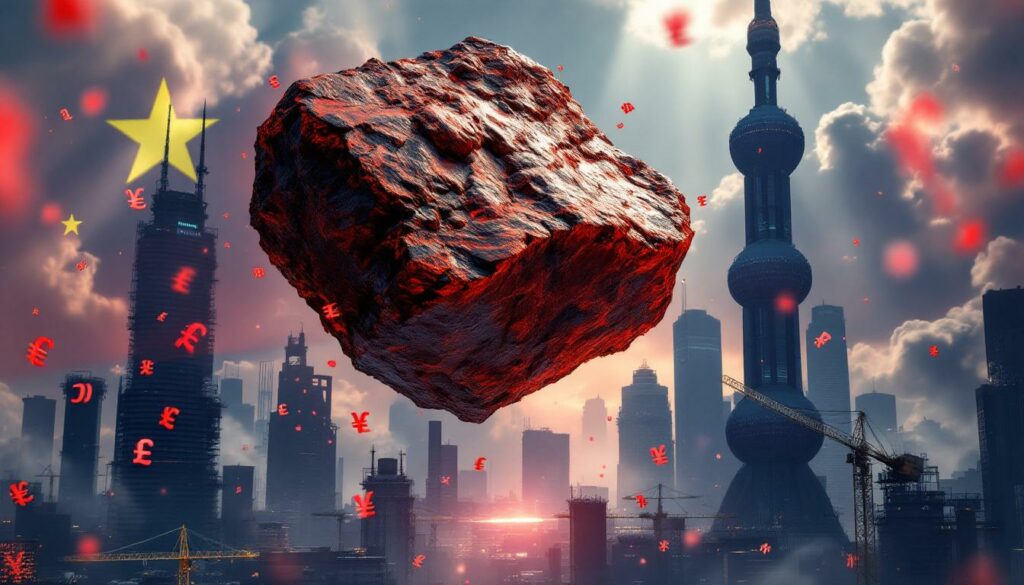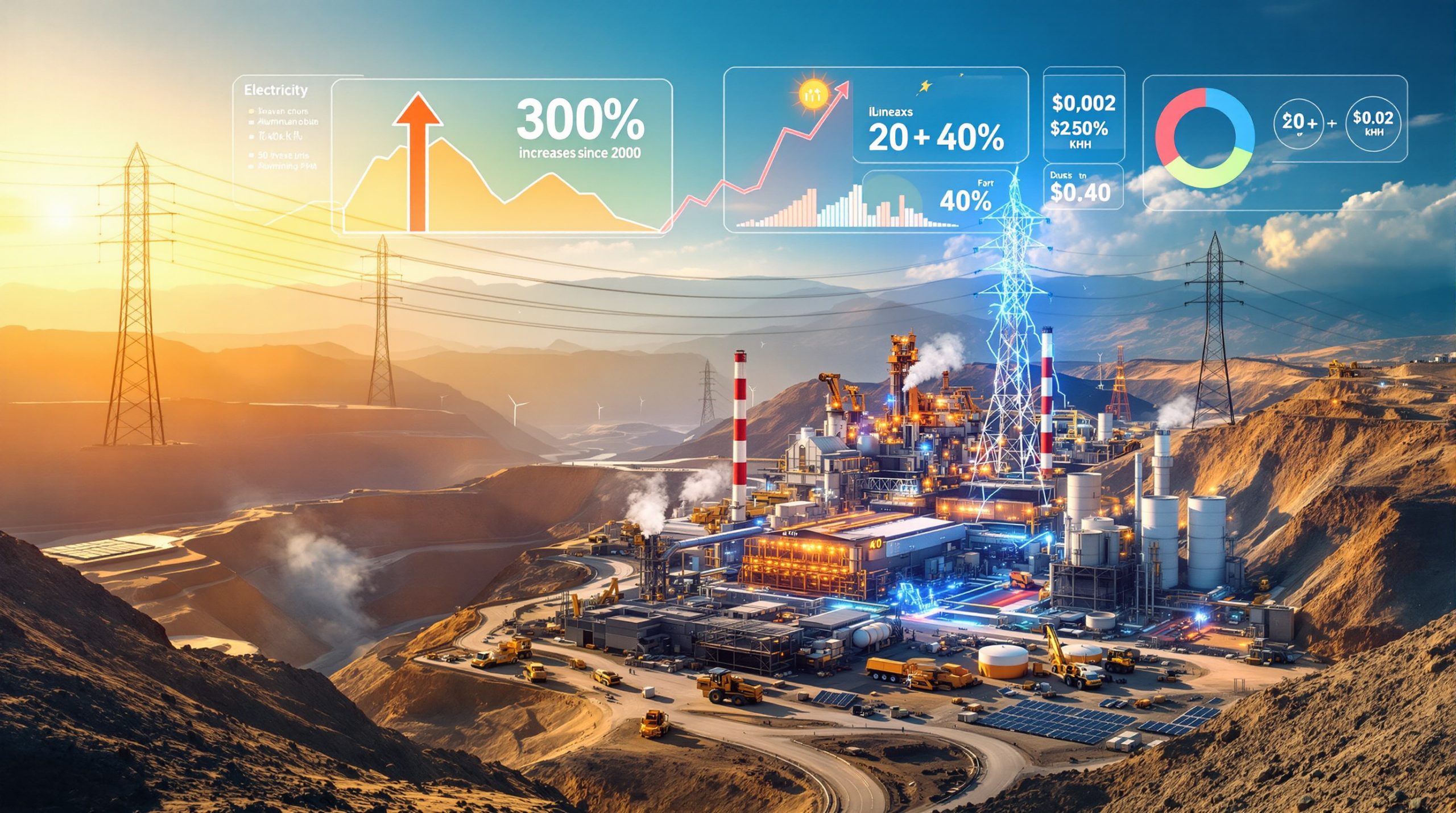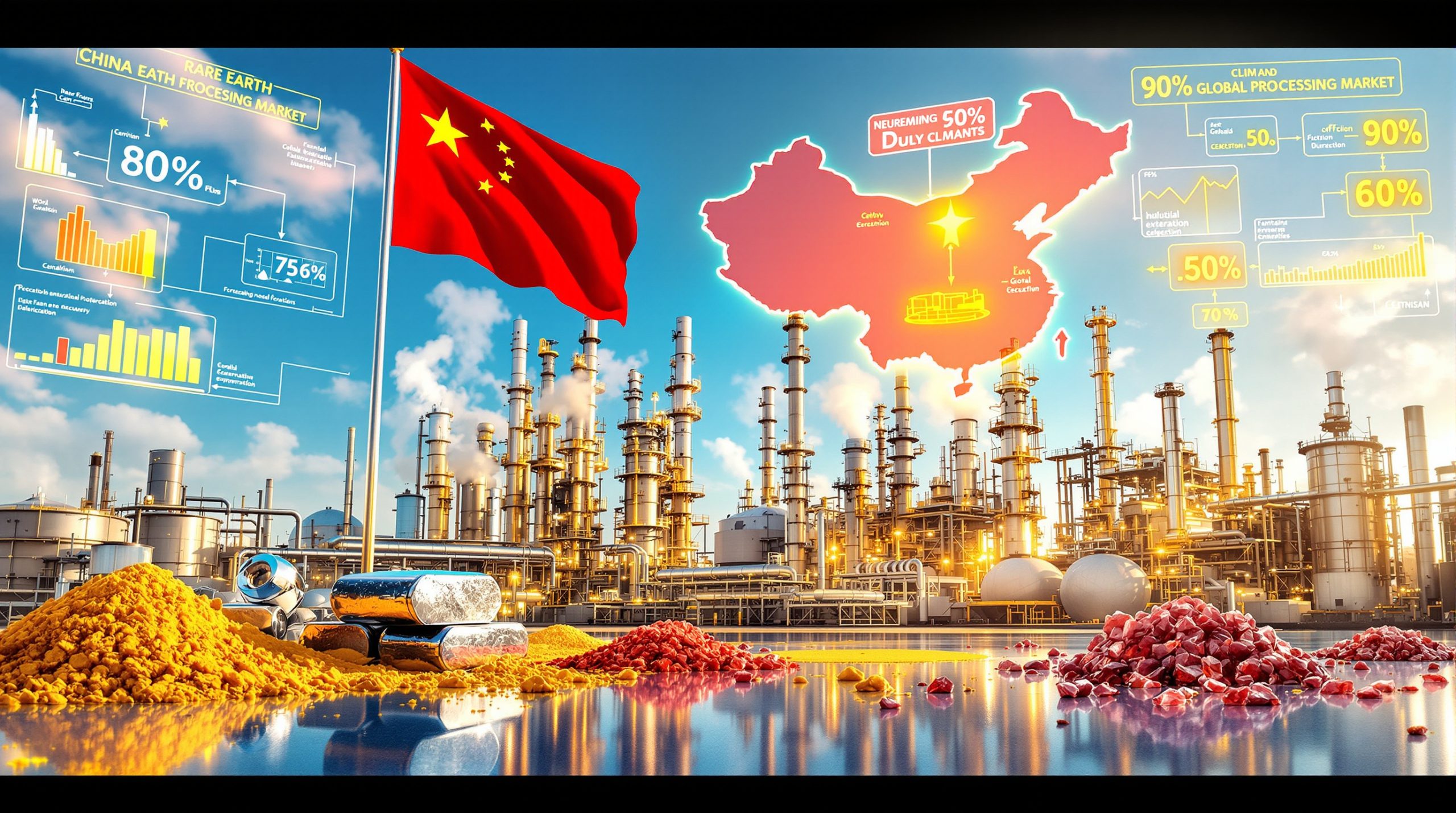China's Economic Deceleration: A Perfect Storm for Iron Ore Markets
Iron ore prices have been falling steadily as China's economic data reveals deepening challenges in the steel and property sectors. With futures dropping and analysts expressing concern about the sustainability of demand, global investors are closely monitoring developments in the world's largest iron ore consumer. Recent iron ore price trends suggest this downward trajectory may continue as structural issues persist.
Understanding the Recent Iron Ore Price Decline
The iron ore market is experiencing significant downward pressure as China's economic troubles continue to mount. Recent data shows iron ore futures dropping 1.6% following the release of disappointing economic indicators from Beijing, with Singapore iron ore futures declining to $98.85 per ton as of 11:50 a.m. London time.
This decline isn't isolated to iron ore alone. Yuan-priced futures in Dalian and steel contracts in Shanghai have also shown consistent downward movement. The ripple effects extend to other metals, with copper on the Shanghai Futures Exchange falling by up to 0.8% to reach its lowest point since early May 2025. The impact on key iron ore markets has been substantial, with implications for global trade patterns.
The Steel Production Contraction Crisis
The numbers paint a troubling picture for China's steel industry. Crude steel output plummeted by 9.2% year-over-year in June 2025, with production totaling just 83.2 million tons. This represents the most significant decline in ten months and has pushed first-half steel production to its weakest level since 2020.
"The market situation of supply exceeding demand has not fundamentally changed," according to a statement from Angang Steel Co., highlighting the persistent structural imbalance plaguing the industry.
Industry analysts note that despite production cuts, supply continues to outpace demand, creating a fundamental problem for steel producers and, by extension, iron ore miners. This imbalance appears unlikely to resolve in the near term without significant external intervention or economic recovery. The iron ore forecast 2025 suggests continued volatility as these market forces play out.
What's Behind China's Steel Industry Struggles?
The Property Sector's Continued Collapse
China's property market, once the engine of steel demand, continues its prolonged downturn with no clear end in sight. Recent home pricing data from the National Bureau of Statistics (NBS) revealed price declines across all surveyed cities – an unprecedented development that signals the depth of the real estate crisis, as reported by industry analysts.
The NBS deputy director acknowledged the need for additional stabilization efforts, but concrete actions remain elusive. Property developers continue to struggle with debt burdens, unfinished projects, and weak buyer sentiment, creating a negative feedback loop that directly impacts steel consumption.
Construction activities traditionally account for approximately 35% of China's steel demand, making the property sector's health critical to iron ore markets. The continuing weakness in real estate represents a fundamental drag on steel demand that production cuts alone cannot address.
Steel Industry's Financial Bloodbath
The financial toll on Chinese steel producers has been severe. In recently released preliminary half-year results, major players reported continuing losses:
- Angang Steel Co. posted a loss of 1.14 billion yuan ($159 million) for the first half of 2025
- Maanshan Iron & Steel Co. also reported significant financial losses
- Even state-backed steel giants are struggling to maintain profitability
Some steel mills reported marginal improvement compared to the previous year, primarily due to lower raw material costs rather than stronger demand or higher steel prices. This cost-side relief has provided temporary breathing room but hasn't addressed the fundamental demand challenges.
How Are Market Participants Responding?
The Government Intervention Waiting Game
Iron ore and steel futures experienced a brief rally last week on speculation about potential government support measures. Markets reacted positively to Beijing's statements about addressing industrial overcapacity, which some investors interpreted as a signal of upcoming stimulus or industry restructuring.
However, the sustainability of any government-driven rally remains questionable. As one commodity analyst noted, "The market is pricing in hope rather than fundamentals. Unless we see concrete action targeting property and construction, these rallies will likely be short-lived."
Traders are currently weighing mixed economic signals, balancing the potential for government intervention against persistent weak fundamentals. This uncertainty has contributed to price volatility as market participants position themselves for possible policy announcements. The latest miners' demand insights reveal how major producers are navigating these challenging market conditions.
Broader Economic Context: Mixed Signals
China's overall economic growth exceeded expectations at 4.7% in Q2 2025, despite sectoral weaknesses. This dichotomy between headline growth and industry-specific challenges creates a complex picture for commodity investors, as detailed in recent economic analyses.
The export market has shown surprising resilience, helping to offset some domestic weakness. However, analysts question whether this export strength can be maintained given global economic uncertainties and potential trade tensions.
Industrial overcapacity and excessive competition remain systemic issues that Chinese authorities have vowed to address. While this could eventually lead to a more balanced steel market, the transition period may involve significant production disruptions and market volatility.
Raw material price decreases have provided some relief to steel producers' margins, but this hasn't translated into increased iron ore demand due to the overriding impact of weak end-user consumption.
What Does This Mean for Global Metal Markets?
Ripple Effects Across Base Metals
China's economic uncertainties are weighing heavily on global metal markets beyond iron ore. Copper prices on the London Metal Exchange recently reached their lowest close since June 19, 2025, highlighting the broader impact of China's industrial slowdown.
Most other metals have also experienced downward pressure, with aluminum, zinc, and nickel all facing similar challenges. This synchronized decline underscores the importance of Chinese demand across the metals complex.
U.S. import demand for metals is showing signs of fading, compounding the challenges facing global suppliers. With both major consumption centers experiencing weakness, the outlook for industrial metals appears increasingly challenging. The WA resources impact has been particularly significant given the region's heavy reliance on mineral exports.
Future Outlook for Iron Ore: Navigating Uncertainty
The fundamental supply-demand imbalance in the iron ore market appears set to persist in the near term. Major miners continue to produce at high volumes despite price pressures, while Chinese steel production cuts limit demand growth potential.
Government intervention remains a key wild card that could temporarily alter market dynamics. Potential stimulus measures targeting property or infrastructure could provide short-term demand boosts, but structural reforms addressing overcapacity might initially depress demand further.
The property sector's recovery trajectory will be crucial for sustainable demand improvement. Without stabilization in real estate, any government-driven demand boost may prove temporary.
Export market performance will continue to influence overall industrial metal demand. If Chinese exports remain resilient, this could partially offset domestic weakness and provide some support for iron ore prices.
Comparative Analysis: China's Steel Industry Performance
| Indicator | Current Status (2025) | Year-Over-Year Change | Impact on Iron Ore |
|---|---|---|---|
| Crude Steel Output | 83.2 million tons (June) | -9.2% | Negative |
| First-Half Production | Lowest since 2020 | Declining | Negative |
| Steel Company Profits | Loss-making | Improving margins but still negative | Neutral |
| Property Market | Prices falling in all surveyed cities | Continued decline | Negative |
| Export Market | Currently resilient | Uncertain sustainability | Neutral to Negative |
Market Insight: "The steel industry saw some improvement compared to the same period last year," according to Angang Steel. "However, the market situation of supply exceeding demand has not fundamentally changed."
Key Challenges for China's Steel and Iron Ore Markets
-
Persistent property sector weakness
- Continued price declines across cities
- Lack of effective stabilization measures
- Diminished construction activity
-
Industrial overcapacity issues
- Supply continues to exceed demand
- Government pledges to address the imbalance
- Competitive pressures affecting profitability
-
Export market uncertainties
- Current resilience may not be sustainable
- Global economic headwinds
- Potential trade barriers
-
Raw material price dynamics
- Lower input costs providing some margin relief
- Price volatility affecting planning and investment
- Interconnected impacts across the metals complex
FAQ: Iron Ore Market and China's Economic Situation
What factors are currently driving iron ore prices down?
China's declining steel production, ongoing property sector crisis, and uncertainty about export market sustainability are the primary factors pushing iron ore prices lower. The fundamental supply-demand imbalance in the steel industry continues to exert downward pressure on iron ore prices.
How significant is China's steel production decline?
The 9.2% year-over-year drop in June 2025 represents the largest decline in 10 months. First-half production has fallen to levels not seen since 2020, indicating a substantial contraction in the world's largest steel-producing nation.
Are Chinese steel companies profitable in the current market?
No, major steel producers like Angang Steel and Maanshan Iron & Steel reported losses for the first half of 2025, though they noted some margin improvement compared to the previous year due to lower raw material costs.
What potential government interventions could affect the iron ore market?
Markets are anticipating possible support measures for China's struggling property sector and policies to address industrial overcapacity and excessive competition, which could stabilize demand for steel and, by extension, iron ore.
How do geological factors influence the iron ore market during economic downturns?
During economic slowdowns, buyers become more selective about ore quality. Higher grade iron ores (62%+ Fe content) typically maintain better price support than lower grades, as steel mills prioritize efficiency and reduced emissions when operating at lower capacity.
What market psychology is driving iron ore trading patterns?
Traders are caught between responding to deteriorating fundamentals and anticipating potential government stimulus. This creates a "buy the rumor, sell the fact" dynamic where prices rally on intervention speculation but quickly retreat when concrete measures fail to materialize.
Disclaimer: This article contains analysis of market trends and economic conditions. These assessments are based on current data and expert opinions but should not be considered financial advice. Markets are inherently unpredictable, and multiple factors beyond those discussed here can influence commodity prices. Investors should conduct their own research or consult financial advisors before making investment decisions.
Tracking Iron Ore Investments During China's Economic Downturn?
Stay ahead of shifting market dynamics in the iron ore sector with real-time alerts on significant ASX mineral discoveries, powered by Discovery Alert's proprietary Discovery IQ model. Visit Discovery Alert's discoveries page to understand how major mineral findings can generate substantial returns even during challenging economic periods.




